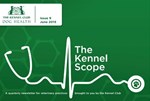Dog’s body size and shape could indicate a greater bone tumour risk
Osteosarcoma is a painful and aggressive bone tumour in dogs that is known to be more common in certain breeds than others. New research has now confirmed that larger breeds, such as Rottweiler, Great Dane and Rhodesian Ridgeback, have a greater risk of osteosarcoma than smaller breeds, as well as showing that breeds with shorter skulls and legs have lower osteosarcoma risk. The findings could inform future breed health reforms as well as studies into the way tumours develop from normal bone. 
The study led by the University of Bristol Veterinary School in collaboration with Cardiff University and Royal Veterinary College (RVC) London, and using data from VetCompass™ and Veterinary Pathology Group (VPG) histology, looked at the epidemiology surrounding which dog breeds get osteosarcoma, and what this means for canine welfare. This study also shows the huge benefits from studying dogs as a model to study this cancer.
The study included 1,756 laboratory-confirmed osteosarcoma cases in dogs compared with 905,211 dogs under veterinary care in the VetCompass™ database during 2016.
The research team found sixteen breeds, mainly larger breeds, had an increased risk of osteosarcoma compared to crossbreeds. Eight breeds, mainly smaller breeds, including Jack Russell, Border Terrier, Bichon Frise, French Bulldog, Cavalier King Charles Spaniel, had reduced risk of osteosarcoma compared to crossbreeds.
The study also compared various measures of body mass and leg length, and confirmed previous findings that heavier dogs with longer legs and longer skull shapes are at greatest risk of bone tumours. The results could inform breed health reforms, especially in predisposed breeds such as the Rottweiler, Great Dane and Rhodesian Ridgeback, Mastiff and German Pointer. Whereas previous studies have identified high-risk breeds for bone tumours, this paper is novel by being able to identify breeds at lowest risk because of the huge size of the study population. The breeds identified here could be researched and compared to recognise novel genetic differences which cause bone tumours.
The findings that bone tumours are more common in certain breeds and conformations indicates that a dog’s genetics play a role in bone tumour development. This link between the biology of conformation and the biology of bone tumours in dogs provides valuable opportunities for further study into what causes bone tumours to develop, and how they could be treated in the future.
Osteosarcoma can affect any dog breed. However, owners of high-risk breeds should be especially alert for signs of the disease. These include lameness and painful, bony swelling and dog owners should contact their vet if concerned.
The full paper is available open access: https://cgejournal.biomedcentral.com/articles/10.1186/s40575-021-00100-7 with an accompanying infographic also available.


